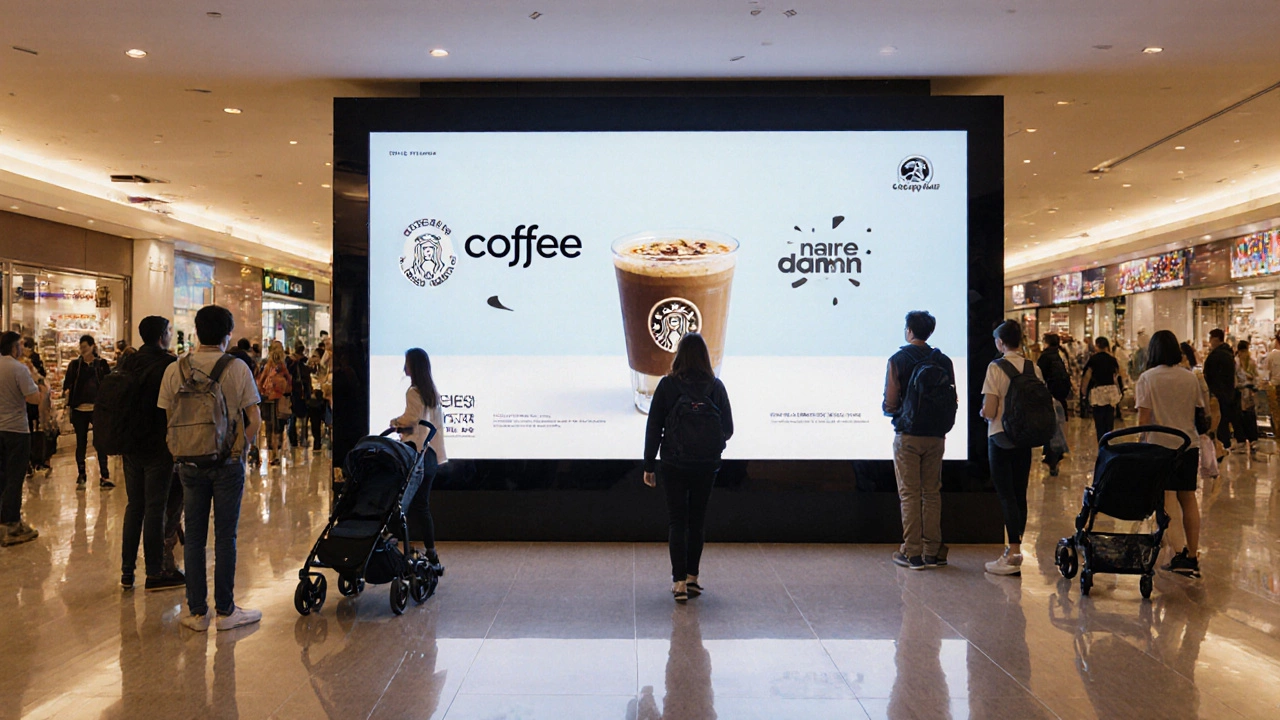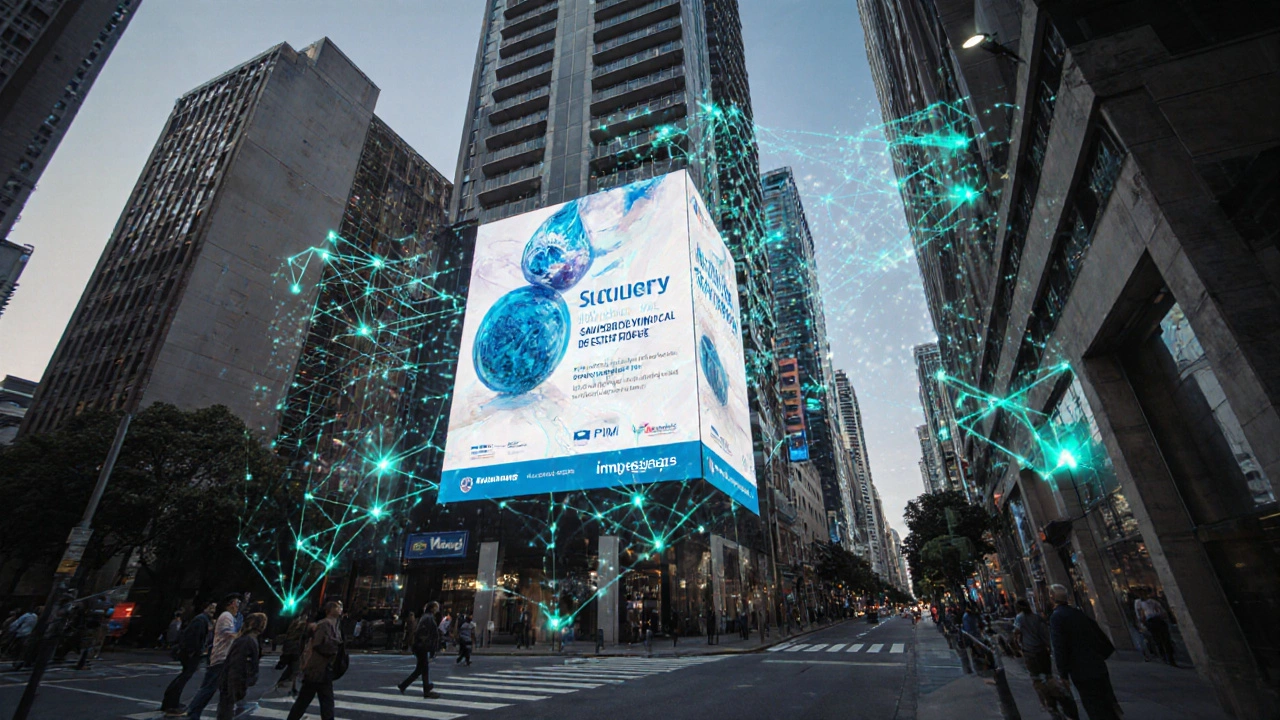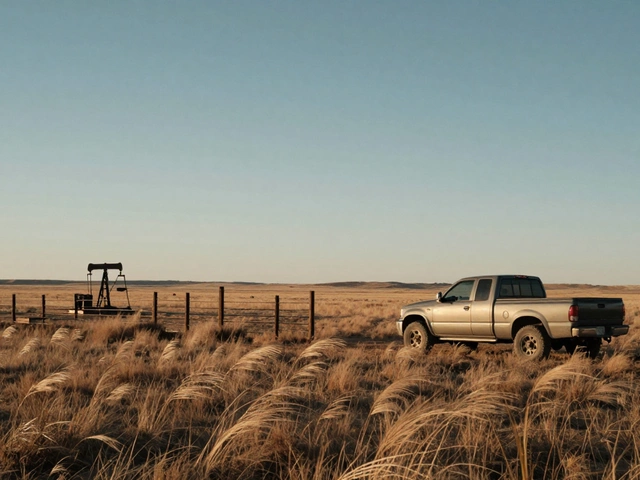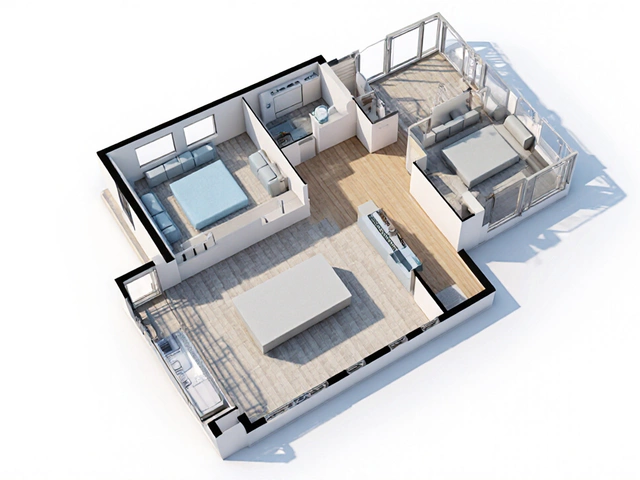Commercial CPM Value Calculator
Calculate Your Ad's Effective CPM
Based on your target audience relevance and estimated impressions
Your Effective CPM Value
Good ValueEffective Impressions: 0
Effective CPM: $0.00
Total Cost (Daily): $0.00
Audience Quality: 0%
Relevance Score: 0%
Recommendation
When you’re advertising on commercial property-like billboards, building wraps, or digital screens on storefronts-you don’t just want to spend money. You want to know if you’re getting a fair deal. That’s where CPM comes in. CPM stands for cost per thousand impressions. It’s the price you pay every time your ad is seen by 1,000 people. But what’s actually a good CPM price for commercial property? It’s not a one-size-fits-all number. It depends on where you’re placing it, who sees it, and how long it runs.
What CPM Really Means for Commercial Ads
Think of CPM like rent for eyeballs. If you pay $50 CPM, you’re paying $50 for every 1,000 people who see your ad. Simple, right? But here’s the catch: not all eyeballs are equal. A billboard on a busy highway in Sydney might get 50,000 drivers a day. A small digital screen inside a boutique mall in Adelaide might only get 5,000 shoppers. The CPM might be lower for the mall, but the value? It could be higher if those shoppers are your exact target audience.
CPM isn’t about how many people pass by. It’s about how many of them matter. A local plumbing company doesn’t need to reach every commuter on the M4. They need to reach homeowners in the eastern suburbs who are likely to need a leak fixed next week. That’s why location, audience quality, and dwell time matter more than raw numbers.
Average CPM Rates for Different Commercial Property Types
There’s no universal CPM rate for commercial property advertising. But based on 2025 data from Australian outdoor advertising networks and property owners, here’s what you’re likely to see:
| Ad Type | Location | CPM Range (AUD) | Estimated Daily Impressions |
|---|---|---|---|
| Highway Billboard | Major arterial road | $15 - $35 | 20,000 - 80,000 |
| Urban Billboard | City center, high foot traffic | $25 - $50 | 15,000 - 40,000 |
| Digital Screen (Retail Mall) | Shopping center entrance | $30 - $70 | 8,000 - 25,000 |
| Building Wrap (Office Tower) | Prime CBD location | $40 - $90 | 50,000 - 150,000 |
| Bus Shelter Ad | High-density residential area | $10 - $25 | 5,000 - 15,000 |
| Gas Station Canopy | Major intersection | $12 - $30 | 10,000 - 30,000 |
Notice the pattern? The more targeted the audience and the longer the exposure time, the higher the CPM. A digital screen in a luxury mall where people spend 15 minutes waiting for coffee? That’s worth more than a highway billboard that flashes by in two seconds-even if the highway gets more total views.
What Makes a CPM Price “Good”?
A good CPM isn’t the lowest one you can find. It’s the one that gives you the best return on your ad spend. Ask yourself these three questions:
- Are the people seeing this ad likely to become customers?
- How long will they see it? (A 30-second digital loop counts more than a 2-second glance.)
- Does the ad have clear visibility? (No obstructions, good lighting, readable from 20 meters?)
Let’s say you’re a new fitness studio opening in Norwood. You’re comparing two options:
- Option A: A $20 CPM highway billboard near the freeway. 50,000 daily impressions. But 80% of viewers are commuters heading to the city-they don’t live nearby.
- Option B: A $45 CPM digital screen at the Norwood shopping center entrance. 12,000 daily impressions. 70% are local residents shopping or dropping kids at school.
At first glance, Option A seems cheaper. But if only 10% of highway viewers are potential customers, you’re paying $20 for 5,000 relevant views. That’s $4 CPM for your target audience. Option B? $45 CPM for 8,400 relevant views. That’s $5.36 CPM for your target audience. You’re paying more per thousand-but you’re paying for the right thousand.
That’s what makes a CPM price good: efficiency, not economy.

Seasonality and Contract Length Matter Too
CPM isn’t fixed. It moves with demand. In Adelaide, CPMs for retail ads spike in November and December. That’s when people start shopping for Christmas. If you’re launching a new product in January, you might get 20-30% lower rates in November than in December.
Same goes for contract length. If you commit to a 12-month contract on a prime building wrap, you’ll usually get a 15-25% discount off the standard CPM. Short-term rentals (under 3 months) often cost more per impression because the owner can’t lock in long-term revenue.
Always ask: Can I lock in a rate for longer? Can I bundle multiple locations? Many property owners will give you a better deal if you’re placing ads on three bus shelters instead of just one.
How to Spot a Bad Deal
Not every low CPM is a win. Here are red flags to watch for:
- Hidden fees: Some vendors charge extra for design, installation, or maintenance. Ask for the total cost upfront.
- Low visibility: Is the ad blocked by trees, parked cars, or glare? Can you read it from a moving car?
- No proof of traffic: A vendor claims “50,000 daily views.” Ask for the source. Is it from traffic counters? GPS data? Or just a guess?
- No control over placement: Are you stuck with a screen that only runs ads from 7 AM to 9 AM? What if your target audience shops at 6 PM?
One client in Perth paid $18 CPM for a billboard on a major road-until they realized the sign was facing away from traffic. The ad was visible only to people exiting a side street. They lost $12,000 in six weeks.

How to Negotiate a Better CPM
You don’t have to accept the first quote. Here’s how to get more value:
- Compare at least three providers: Don’t settle for the first one you talk to. Ask for sample locations and audience reports.
- Bundle your ads: One ad on a billboard? $40 CPM. Three ads across different high-traffic zones? Maybe $28 CPM each.
- Ask for performance data: Request monthly impression reports. If the numbers are consistently low, renegotiate or walk away.
- Time your launch: Avoid peak seasons unless you absolutely need them. November and December are expensive. March and August are quieter-and cheaper.
One Adelaide-based coffee brand negotiated a 20% discount by agreeing to run their ad for 10 months instead of 6. They also got a free digital screen upgrade during the holiday rush. That’s how smart negotiation works.
What to Do If Your CPM Is Too High
Maybe you’re paying $70 CPM and you’re not seeing results. Don’t just cut the budget-rethink the strategy.
- Switch to a more targeted location. A bus shelter near a university might be cheaper and more effective than a downtown billboard.
- Change your message. A static ad with text might not work. Try a video loop with motion.
- Test a shorter campaign. Run a 4-week test. Measure results. Then scale up-or pivot.
There’s no shame in adjusting. The best advertisers don’t stick to a plan-they refine it based on data.
Final Takeaway: It’s Not About the Number, It’s About the Match
A “good” CPM price isn’t the cheapest one. It’s the one that puts your message in front of the people who will actually act on it. A $60 CPM on a building wrap in the CBD might outperform a $15 CPM on a highway if the first one reaches decision-makers who can book your service tomorrow.
Don’t chase low numbers. Chase relevance. Track your results. Ask for data. And never assume that more eyeballs means more sales. Sometimes, fewer eyes-but the right ones-make all the difference.





